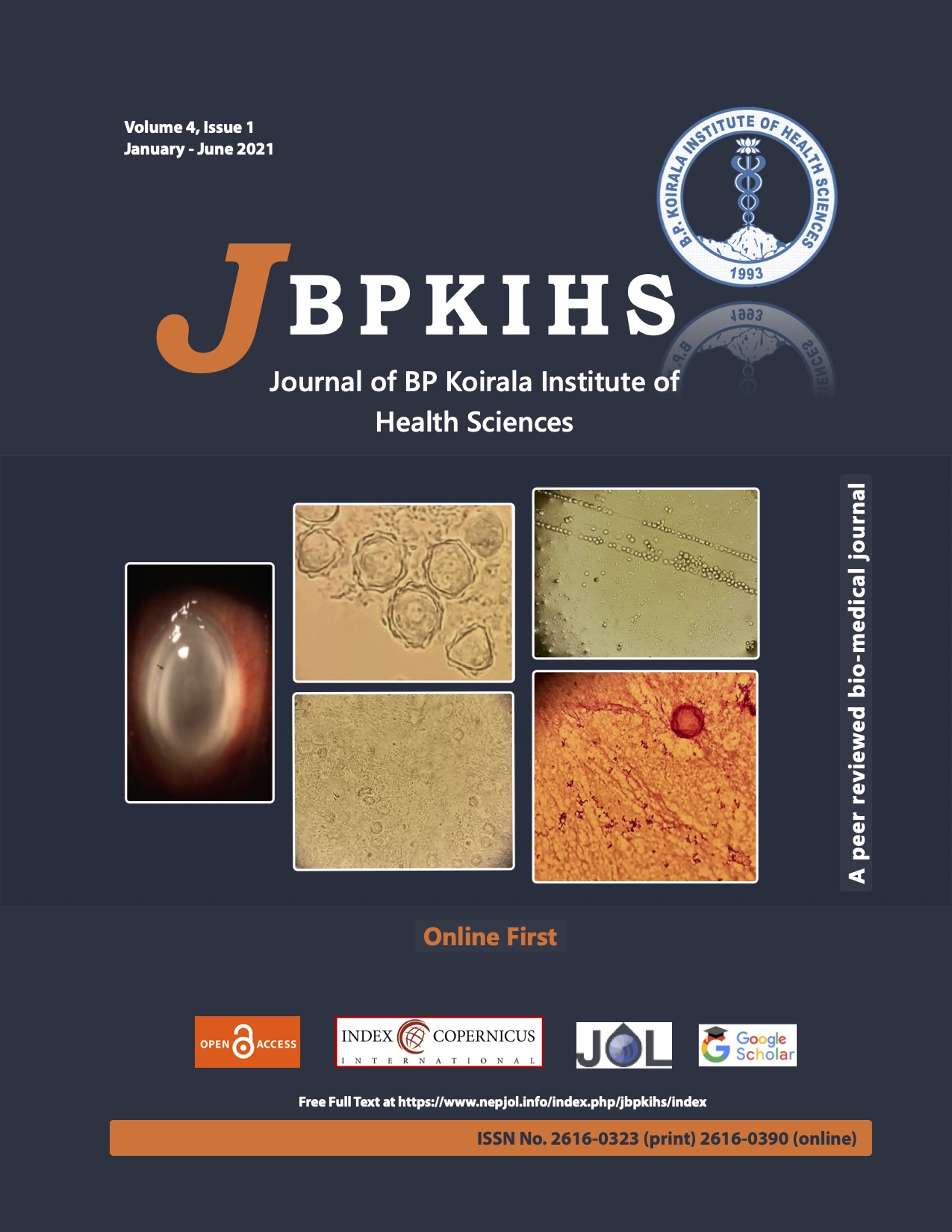Mental Health Status among Adolescents of High Schools: A Cross-sectional Study
DOI:
https://doi.org/10.3126/jbpkihs.v4i1.33982Keywords:
Adolescent, Psychosocial problems, Mental health statusAbstract
Background: Adolescents are prone to develop various psychosocial problems with a long-standing impact. We aimed to investigate the mental health status among adolescents from high schools in Dharan sub-metropolitan city.
Methods: In this descriptive cross-sectional study, we enrolled 150 adolescents from two different schools of Dharan, using a stratified random sampling technique. The Pediatric Symptoms Checklist for Youth was used to assess their mental health status. A score of 30 or more was considered as a mental health problem. Poverty, family dispute, punishment, and personal and family history of a psychiatric condition were considered as potential predictors of mental health problem. The chi-square test was applied to identify the predictors of mental health problem.
Results: The final analysis included 141 samples. More than 60% of the students belonged to the age group 13-15 years, and 52.5% were females. About 59.6% were Janajatis, and 61% were Hindus. The majority (63.8%) were living below the poverty line. The majority (83.7%) had no dispute in the family. All the students had received punishment, and 51.1% had received it at home. One-third of the students had mental health problem. The presence of mental health problem was significantly associated with nuclear family status (p = 0.04), and history of a family dispute (p = 0.04).
Conclusion: Mental health problem was common among adolescents, and it was associated with the nuclear family structure and the presence of family dispute.
Downloads
Downloads
Published
How to Cite
Issue
Section
License
This license enables reusers to copy and distribute the material in any medium or format in unadapted form only, for noncommercial purposes only, and only so long as attribution is given to the creator.




